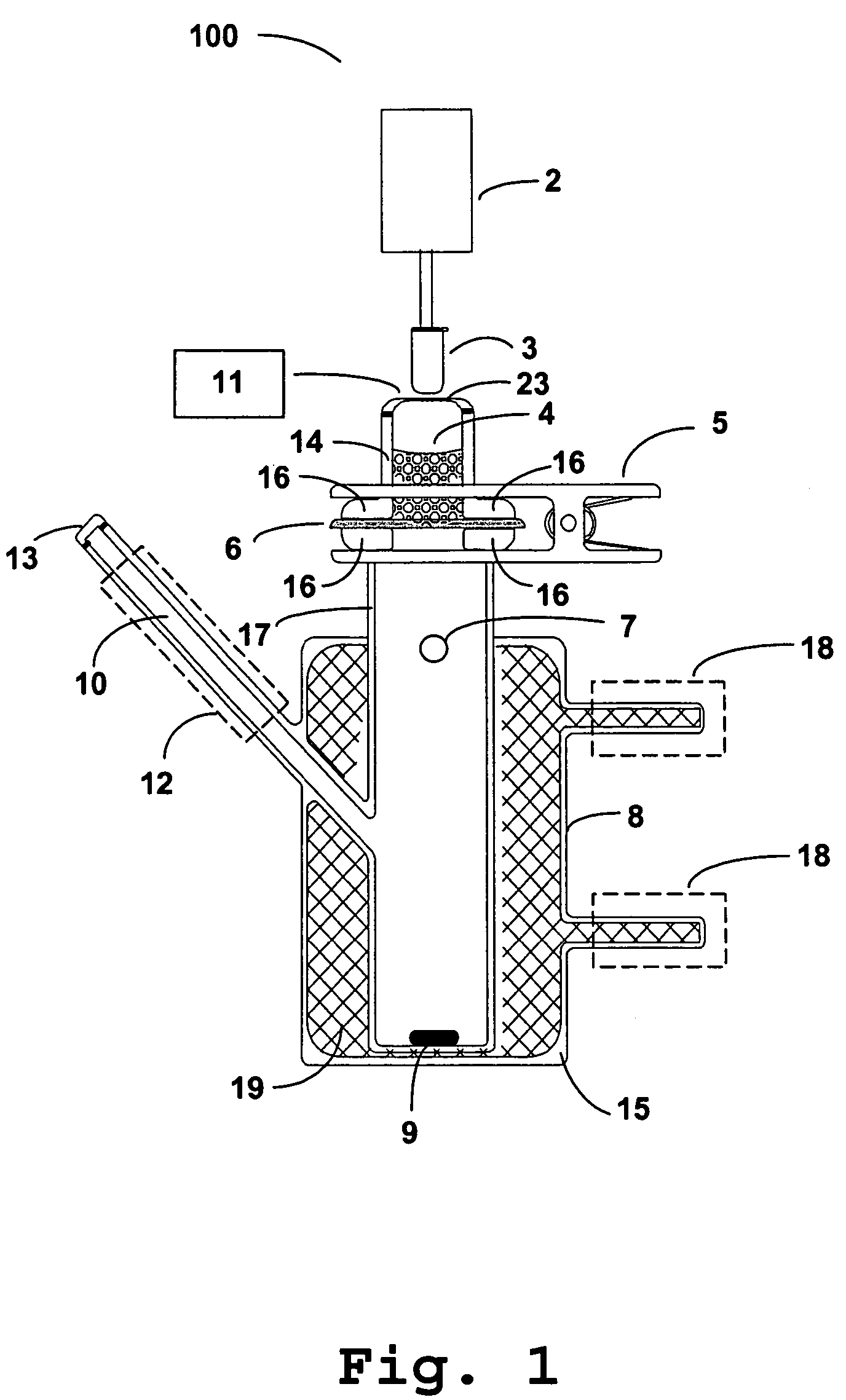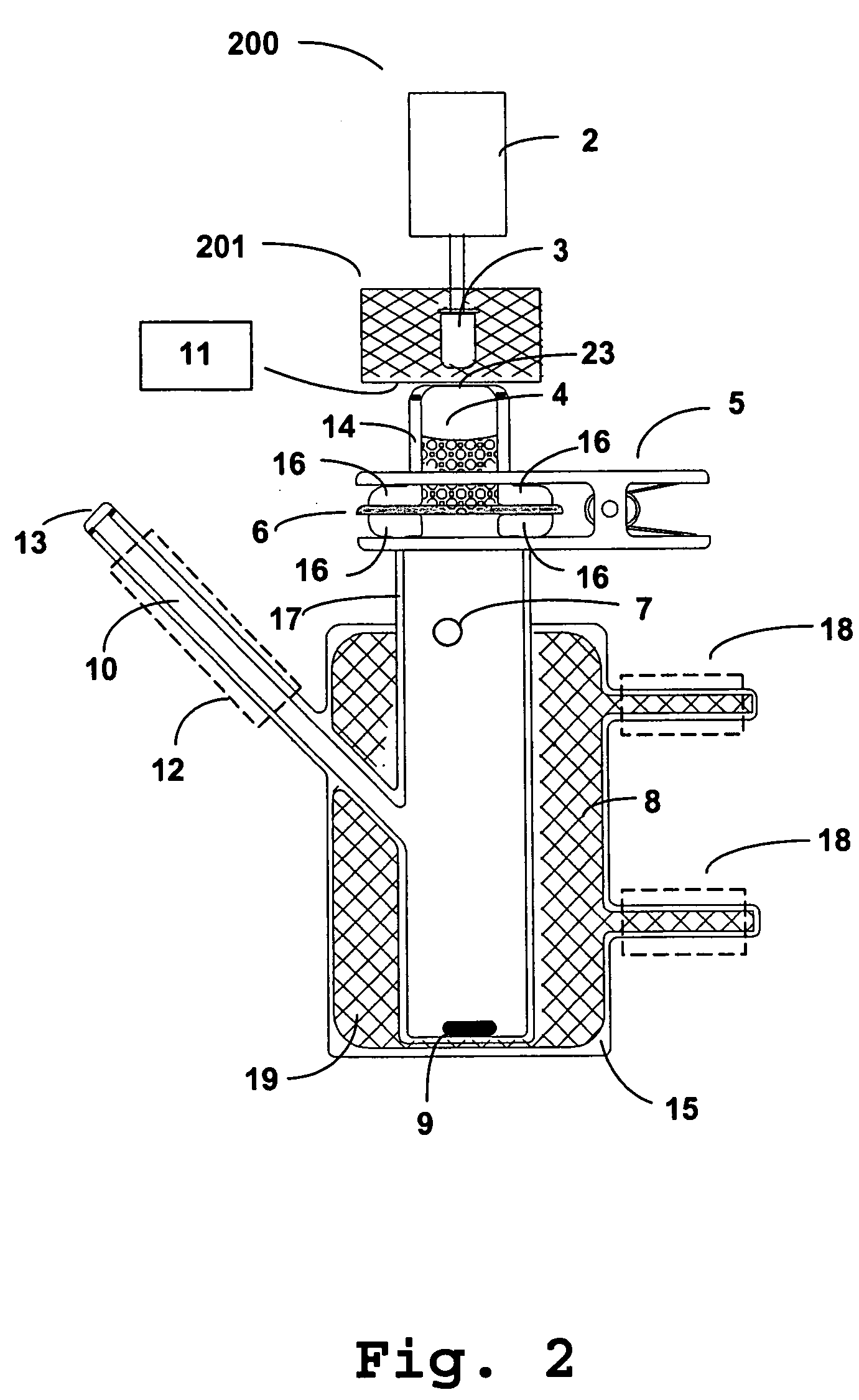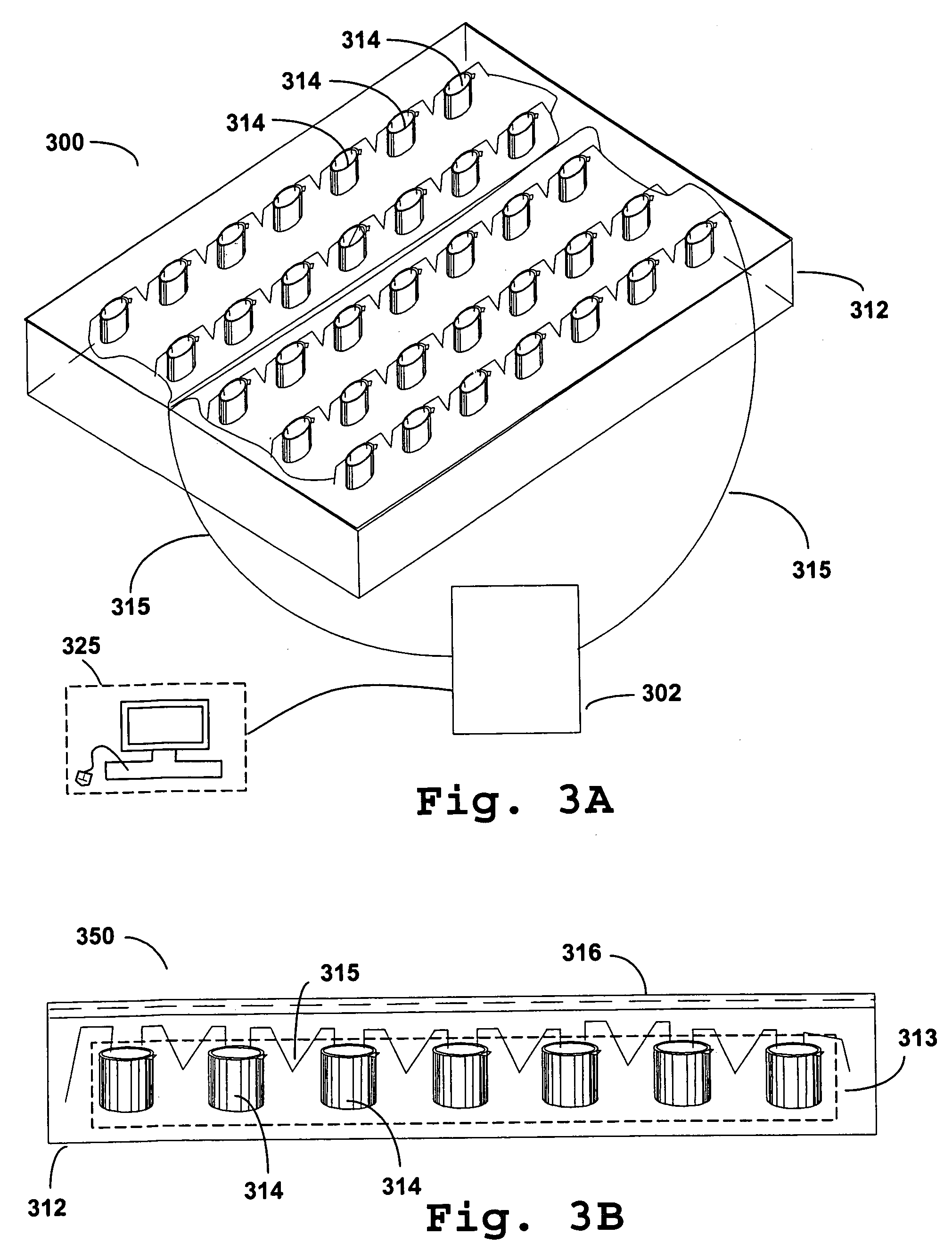Photokinetic delivery of biologically active substances using pulsed incoherent light
a biologically active substance and incoherent light technology, applied in the field of photokinetic delivery of biologically active substances, can solve the problems of preventing the use of this method, affecting the skin structure, and affecting the delivery rate so as to enhance the skin permeability and the rate of delivery of biologically active components
- Summary
- Abstract
- Description
- Claims
- Application Information
AI Technical Summary
Benefits of technology
Problems solved by technology
Method used
Image
Examples
example 1
[0121]Preparation and analysis of Group I solutions. RP-HPLC was performed on a Bodman Industries HPLC system equipped with a C18, 4.6×150 mm, 5 μm Lichrosorb column, LabAlliance Series II and III model pumps, a 200-1100 nm UV-VIS detector and a DStar autosampler (Bodman Industries, Aston, Pa.). Group I biologically active samples were dissolved in HPLC grade water to give a final concentration of 0.5% (w / v). Elution profiles were monitored at 274 nm in a mobile phase comprising 10% (v / v) acetonitrile in HPLC water using an isocratic method. Samples were run over a period of 9 minutes at a flow rate of 1 ml / min. Data was analyzed using DataAlly (Bodman Industries, Aston, Pa.). All peaks were baseline resolved.
[0122]For permeation studies, Group I biologically active substances were prepared by either one of two methods: (a) the substances were dissolved in HPLC grade water to yield a final concentration of 0.5% (w / v) before heating to 70° C. until dissolved; or (b) the substances we...
example 2
[0123]Preparation and analysis of Group II solutions. RP-HPLC was performed on a Bodman Industries HPLC system equipped with a C18, 4.6×250 mm, 5 μm Alltech Econosphere column (Fisher, Pittsburgh, Pa.), LabAlliance Series II and III model pumps, a 200-1100 nm UV-VIS detector and a DStar autosampler (Bodman Industries, Aston, Pa.). Group II biologically active samples were dissolved in HPLC grade water to give a final concentration of 1% (w / v). Elution profiles were monitored at 245 nm in a mobile phase comprising 4:1 ratio of acetonitrile to 12.5 mM citric acid in HPLC grade water using an isocratic method. Samples were run at a flow rate of 2 ml / min. Data was analyzed using DataAlly (Bodman Industries, Aston, Pa.). All peaks were baseline resolved.
[0124]For permeation studies, Group II biologically active substances were prepared by dissolving the substance in HPLC grade water to yield a final concentration of 1.0% (w / v). One percent (w / v) hydroxypropyl cellulose was then added to ...
example 3
[0125]Preparation and analysis of Group III solutions. RP-HPLC was performed on a Bodman Industries HPLC system equipped with a C18, 4.6×250 mm, 5 μm Vydac 201SP54 column (Vydac, Hesperia, Calif.), a LabAlliance Series II or III model pump, a 200-1100 nm UV-VIS detector and a DStar autosampler (Bodman Industries, Aston, Pa.). Group III biologically active samples were dissolved in 0.1 M potassium acetate in HPLC grade water to give a final concentration of 0.5% (w / v). Elution profiles were monitored at 245 nm using a gradient method wherein the mobile phase A comprised 0.1 M potassium acetate in HPLC grade water (pH adjusted to 4.9 to 5.2 using formic acid) and mobile phase B comprised 50% (v / v) acetonitrile in HPLC grade water. A 5% to 60% gradient of mobile phase B was run over a period of 15 minutes at a flow rate of 1.5 ml / min. Data was analyzed using DataAlly (Bodman Industries, Aston, Pa.). All peaks were baseline resolved.
[0126]For permeation studies, Group III biologically a...
PUM
| Property | Measurement | Unit |
|---|---|---|
| Fraction | aaaaa | aaaaa |
| Fraction | aaaaa | aaaaa |
| Wavelength | aaaaa | aaaaa |
Abstract
Description
Claims
Application Information
 Login to View More
Login to View More - R&D
- Intellectual Property
- Life Sciences
- Materials
- Tech Scout
- Unparalleled Data Quality
- Higher Quality Content
- 60% Fewer Hallucinations
Browse by: Latest US Patents, China's latest patents, Technical Efficacy Thesaurus, Application Domain, Technology Topic, Popular Technical Reports.
© 2025 PatSnap. All rights reserved.Legal|Privacy policy|Modern Slavery Act Transparency Statement|Sitemap|About US| Contact US: help@patsnap.com



